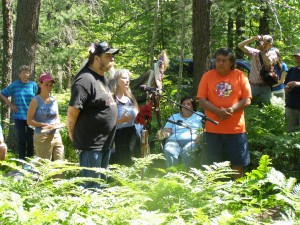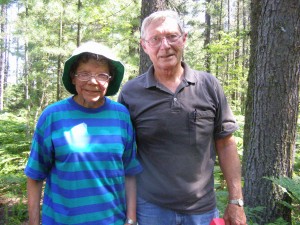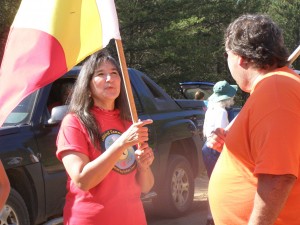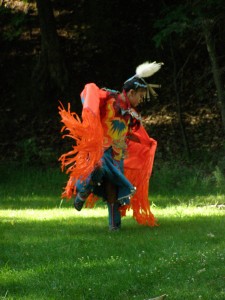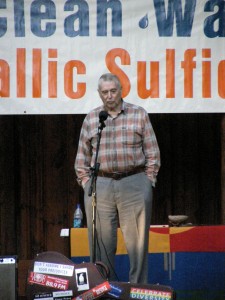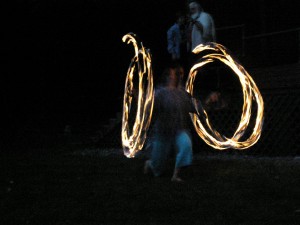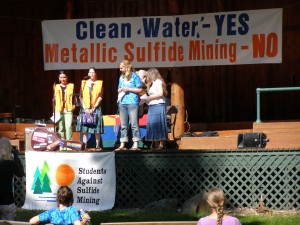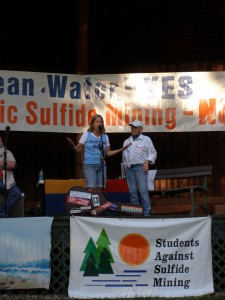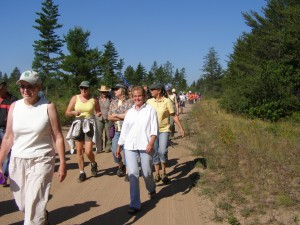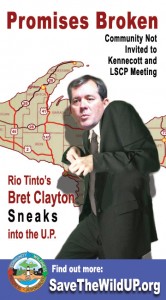Attend a meeting in Duluth or Cleveland or send written comments before July 22
The U.S. Coast Guard released a draft Environmental Impact Statement for the rulemaking: “Dry Residue Discharges in the Great Lakes”. In this rulemaking the Coast Guard proposes to deviate from federal and international laws and permit the dumping of cargo- such as limestone, iron ore, coal, and grain- from commercial vessels into the Great Lakes.
The public can comment through July 22 on the proposed Coast Guard policy by submitting written comments or speaking at a public meeting. Public meetings are scheduled for July 15 in Duluth, Minnesota, and July 17 in Cleveland, Ohio.
Background:
When ships on the Great Lakes dump waste material into the water, it is called “cargo sweeping” or “dry cargo discharge.” The actual quantity of waste material dumped into the lakes in a single shipping season is astounding. In 2004-2005, U.S.-flag carriers dumped more than 653,000 pounds of iron ore, 219,000 pounds of coal, 228,000 pounds of limestone and 11,300 pounds of other material into the Great Lakes.
Many of the cargo residues — especially iron ore and taconite — contain mercury and other toxic metals that can harm natural habitats in the lakebeds, as well as people who eat fish contaminated by the metals. Environmental effects of cargo sweeping are largely unknown.
Clear laws exist on both the international and domestic levels that prohibit the dumping of garbage in any of the internal waterways of the United States. The International Convention for the Prevention of Pollution from Ships (MARPOL) is the primary international treaty covering the discharge of pollutants into the ocean. The United States is signatory to MARPOL, which articulates that garbage is not to be dumped within 12 nautical miles off the oceanic coast and therefore does not allow dumping in the Great Lakes. To implement MARPOL Congress passed the Act to Prevent Pollution from Ships (APPS) in 1987. Under both MARPOL and APPS operational wastes (ie: cargo residues) fall under the definition of garbage.
The Coast Guard’s draft interim enforcement policy required under APPS, in place since 1997, has allowed ships to “sweep” cargo residues that litter vessel decks off the side of the ship and into the Great Lakes and St. Lawrence River Basin. Congress recently ordered the Coast Guard to examine cargo sweeping and its effects and the Coast Guard has now proposed a rulemaking on the practice.
The Coast Guard’s proposed rule is illegal, because dry cargo residues fall under the description of garbage in domestic and international law and are thus prohibited to be dumped into inland waters. The Coast Guard should be developing rules that set standards and deadlines to virtually eliminate dry cargo dumping to protect the Great Lakes- St. Lawrence River ecosystem and comply with the law!
Take Action: Comment to the Coast Guard in writing or at one of the two public meetings
Make your comments at the public meetings, or submit them in writing by July 22nd. The Coast Guard’s Notice of Proposed Rulemaking can be viewed, and comments can be submitted, online here.
Other means of submission include:
Fax: 202-493-2251.
Mail: Docket Management Facility (M-30), U.S. Department of Transportation, West Building Ground Floor, Room W12-140, 1200 New Jersey Avenue, SE., Washington, DC 20590- 0001.
Refer to Docket No. USCG-2004-19621 on your submission.
Duluth, Minn. Cleveland, Ohio
July 15, 1 p.m.-5 p.m. July 17, 1 p.m.-5 p.m.
Holiday Inn The Forum Conference Center
200 W. 1st St. 1375 E. 9th St.
Duluth, Minn. Cleveland, Ohio
Phone: 218-727-7492 Phone: 216-241-6338
For more information:
The Coast Guard’s draft EIS can be found here, go down to the bottom of the page to find the draft EIS and its 20 appendices.
Read Great Lakes United’s 2006 comments to the Coast Guard when they were preparing the EIS here
Please feel free to contact:
Alliance for the Great Lakes: Lyman Welch, 312-939-0838 ext. 230 or lwelch@greatlakes.org
Great Lakes United: Jennifer Nalbone, 716-213-0408 or jen@glu.org
Mark Mattson, Lake Ontario Waterkeeper, 416-861-1237
National Wildlife Federation: Michael Murray, 734-887-7110 or murray@nwf.org
